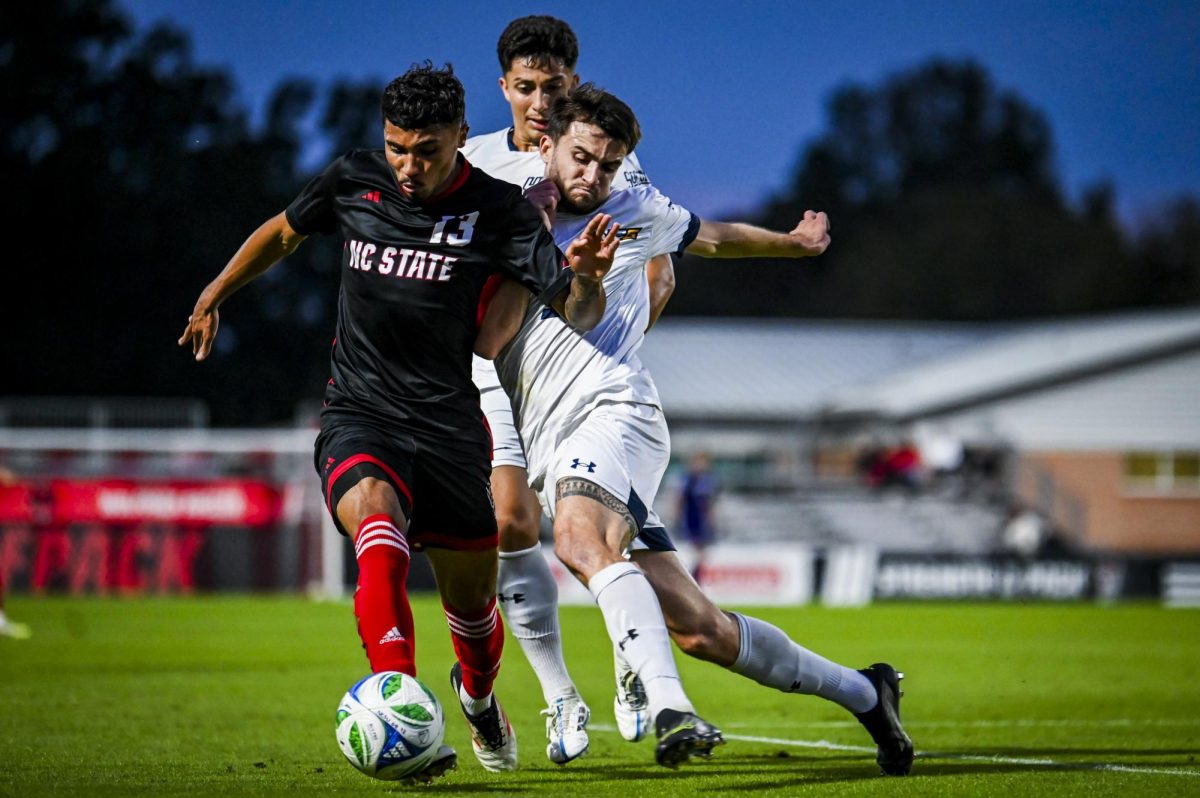In the middle of a particular preseason football practice, under the hot August sun, junior safety Clem Johnson focused on one thing: keeping his head up.
It’s a technique important of players at his position — staying aware of everything moving on the field, even when you’re moving with it or against it.
But that focus also got the best of him that day. While wearing a thin leather chin strap, Johnson manned the middle field when a streaking Jamelle Eugene, a redshirt junior blasted into the side of his face, breaking Johnson’s jaw.
The broken jaw forced Johnson to not only sit out the first four games of his Division-I playing career, but also to eat and drink through a mouthful of wires for nearly five weeks.
“I lost 12 pounds,” Johnson said. “But I gained eight pounds back within about a week [after the wiring was removed]. The food just stayed on as I ate because I was used to the liquid diet.”
As a junior college transfer from Pennsylvania’s Valley Forge Military College, Johnson got hit hard with the depth of talent at the D-I level.
“At every position, there’s somebody just as good, just as fast, just as strong,” Johnson said.
Coach Tom O’Brien was high on Johnson’s potential just prior to his injury, saying he most likely would have started the season at the top of the depth chart. And now, after Johnson has posted seven tackles in each of his last two games, including an interception against Boston College, onlookers can see what O’Brien saw.
“He came in here and he was looking good,” running back Andre Brown said.
Brown is also a former transfer, though one of a much different type. Brown came from Hargrave Military Academy — more of a prep school for players just out of high school. At Valley Forge, a junior college, Johnson showed his skill on both sides of the ball.
Playing quarterback, Johnson earned conference player of the year and was twice named first-team. And though a number of Division-I schools recruited him at skill positions like running back and wide receiver, he stuck with State, who had recruited him as a safety all along.
“I love hitting,” Johnson said. “So playing safety is just what I do.”
Johnson sees the transition from junior college to Division-I easier than the transition from high school for one main reason: speed.
“The speed was faster at junior college [than in high school], the guys were stronger,” Johnson said. “So it was an easier transition from junior college to Division I. There’s a better chance of them being able to contribute right away.”
When Johnson first injured his jaw, he said he thought about the possibility of sitting out the year and using a redshirt. But the idea was never discussed with the coaching staff.
“They didn’t bring it up,” Johnson said of the Pack’s coaches. “If they would have mentioned it, I would have considered it. I wasn’t sure I’d be able to perform coming back from a broken jaw, but I threw on the pads and was ready to go.”
That means good news for a Pack secondary lacking upperclassmen. And good news for Johnson, who after meandering through meals with a straw, is happy to be back on the field and knocking heads.




